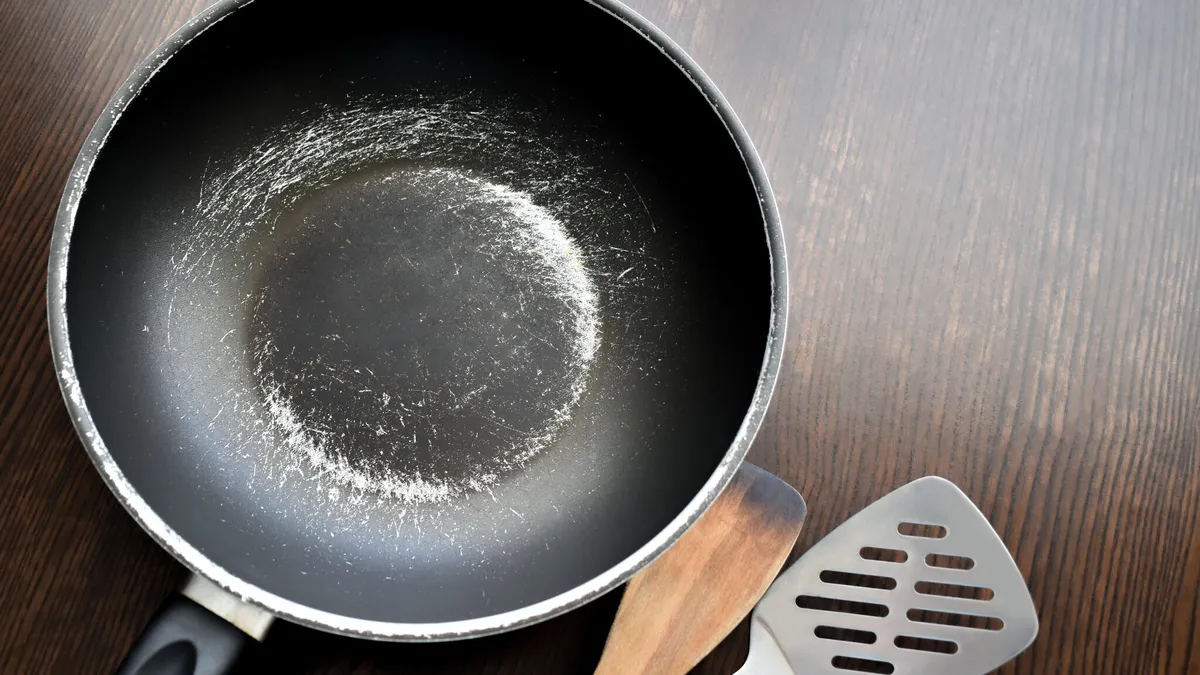Copyright CNET

Nonstick pans rank among the most essential kitchen tools. Beyond making cleanup effortless, they're the simplest way to cook scrambled eggs, pancakes and other sticky foods. Teflon and similar chemically coated cookware have dominated the nonstick market since their introduction in the 1930s. Despite its long history and widespread availability, consumers have increasingly raised safety concerns about these types of pans in recent years. In 2024, the US saw an increase in reported cases of "Teflon flu," an illness with flu-like symptoms caused by overheated nonstick pans leaching chemicals into food. The good news? If you have cookware made after a certain year and you use it properly, you shouldn't have any issues. Here's everything you need to know about Teflon flu and how to use your nonstick cookware safely. Read more: Never Raise Your Air Fryer Above This Temperature What is Teflon flu? The chemical polytetrafluoroethylene (PTFE), found in Teflon and similar nonstick surfaces, is commonly used in air fryers, pots and pans , and other kitchen appliances. When these materials overheat, they can release synthetic compounds that pose health risks. Polymer fume fever, also known as Teflon flu, has reignited a debate about the safety of nonstick cookware. The illness occurs when fumes from an overheated Teflon or nonstick pan are inhaled. Nonstick pans are made with polytetrafluoroethylene (also known as PTFE). PTFEs are known as "forever chemicals" because they take decades or sometimes even hundreds of years to break down. Read more: I Upgraded to This PFAS-Free Glass Fryer and You Should, Too Symptoms of Teflon flu Under regular use, PTFEs aren't thought to pose a health risk; however, when heated to above 500 degrees Fahrenheit, there is an increase in emissions, leading to the condition known as polymer fume fever. Polymer fume fever is associated with a range of reported symptoms, including fever, chills, muscle tension, and headache. Symptoms of Teflon flu are temporary and generally start within 12 hours of exposure, but can take up to 24 hours to develop. How to avoid Teflon flu Teflon and nonstick cookware are easy to use, clean, and maintain; however, they should be used only for cooking at low to medium heat. Never heat your nonstick cookware over high or medium heat for extended periods. Try to keep the surface temperature at or below 450°F, as emissions from the PTFE coating are likely to increase otherwise. What is Teflon and does it cause cancer? Nonstick or Teflon is a popular choice for home cooks. The most significant advantage is that food won't stick to pots and pans coated with Teflon the way it does to other metal materials, so it's easy to flip a pancake or remove a cooked egg. Nonstick surfaces are also effortless to clean, typically requiring only a few seconds to wash by hand. Teflon is a brand name for a synthetic chemical called polytetrafluoroethylene, which is used in many household products, including wire coatings, fabric protectors, and kitchen cookware. The knock on Teflon is that it's unsafe if consumed or absorbed into the body and can increase the chances of cancer and other diseases. Studies have shown some connections (more on that below), but Teflon still exists and is used to make cookware; the safety concerns surrounding Teflon are mostly a thing of the past. I stress mostly. Here's why… The brand Teflon may be associated with a risk of cancer, but it's actually a chemical, formerly used in the making of Teflon, called PFOA, that's to blame. According to the US Centers for Disease Control and Prevention, perfluorooctanoic acid is a manufactured perfluorochemical developed in the 1930s, used to make fluoropolymer coatings and products that resist heat, oil, stains, grease, and water. What are the adverse effects of PFOA? In some studies, PFOA has been linked to cancer, immune deficiency and a host of other medical problems. It has also been shown to affect growth and development and injure the liver in laboratory animals. As recently as 2017, the chemical giant DuPont settled a lawsuit for more than $670 million, acknowledging its role in contaminating drinking water with PFOA (also referred to as C-8) in the mid-Ohio Valley. A previous class-action suit from 2004 in the same area led to a study that found PFOA was linked to cancer and compromised immune function, even in small doses. Teflon cookware made before 2013 may be toxic All that was enough for most manufacturers to halt the production of nonstick coatings using PFOA around 2002. Teflon using PFOA wasn't officially banned in the United States until 2014. Europe banned it in 2008. That means if you own Teflon nonstick cookware from 2013 or earlier, there's a chance it contains PFOA. Nine years is typically longer than the average lifespan of a nonstick pan, but if you're not sure, it's probably best to replace any Teflon-coated pots or pans. If you're concerned, look for PFOA-free cookware Due to the ban, all nonstick cookware made in the US should be PFOA-free; however, it's wise to verify this. Be extra cautious about buying cheap or off-brand cookware, especially if it's not produced in a country with an active PFOA ban. PFOA is still produced elsewhere, mainly in China, and used to make consumer products. The good news is that PFOA-free nonstick cookware is cheap, so there's no reason to risk it with anything that might contain the chemical. You can nab a 10-inch skillet from a trusted cookware brand like Misen for $99 or Tramontina for about $30. Luxury cookware brand All-Clad makes a two-piece nonstick cookware set for $80. The best natural nonstick cookware alternatives If you're ready to ditch Teflon and chemical-based nonstick pots and pans, there are plenty of more natural nonstick alternatives. The most nonstick of the bunch is ceramic cookware, which has seen a boom in popularity since concerns about Teflon first surfaced. A few popular ceramic cookware options include The Always Pan (read my full review here), Caraway and Greenpan. Cast iron is another cookware material that develops a natural nonstick coating over time, especially when properly seasoned and cared for. It won't likely ever become as nonstick as Teflon, but cast iron has loads of other culinary benefits that are worthy of a few extra seconds of scrubbing in the sink after use. Lodge is a tried-and-true cast-iron cookware producer: You can scoop up a 10-inch skillet for as little as $25. Carbon steel is another option, functioning similarly to cast-iron cookware, although it's not quite as heavy, is slightly more sensitive to corrosion, and is typically more expensive. Carbon steel hasn't really taken off here in the US, but it's a favorite of professional chefs, as well as yours truly. Cookware startup Made In produces some excellent carbon steel cookware with prices starting around $99, but there are more affordable options available. FAQs



